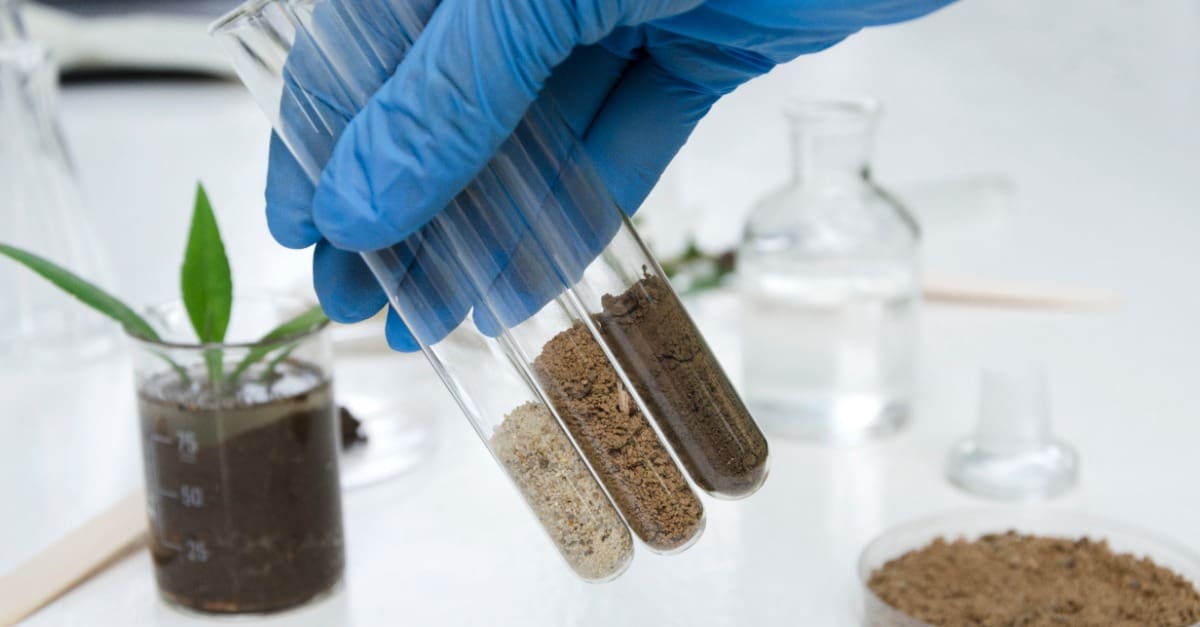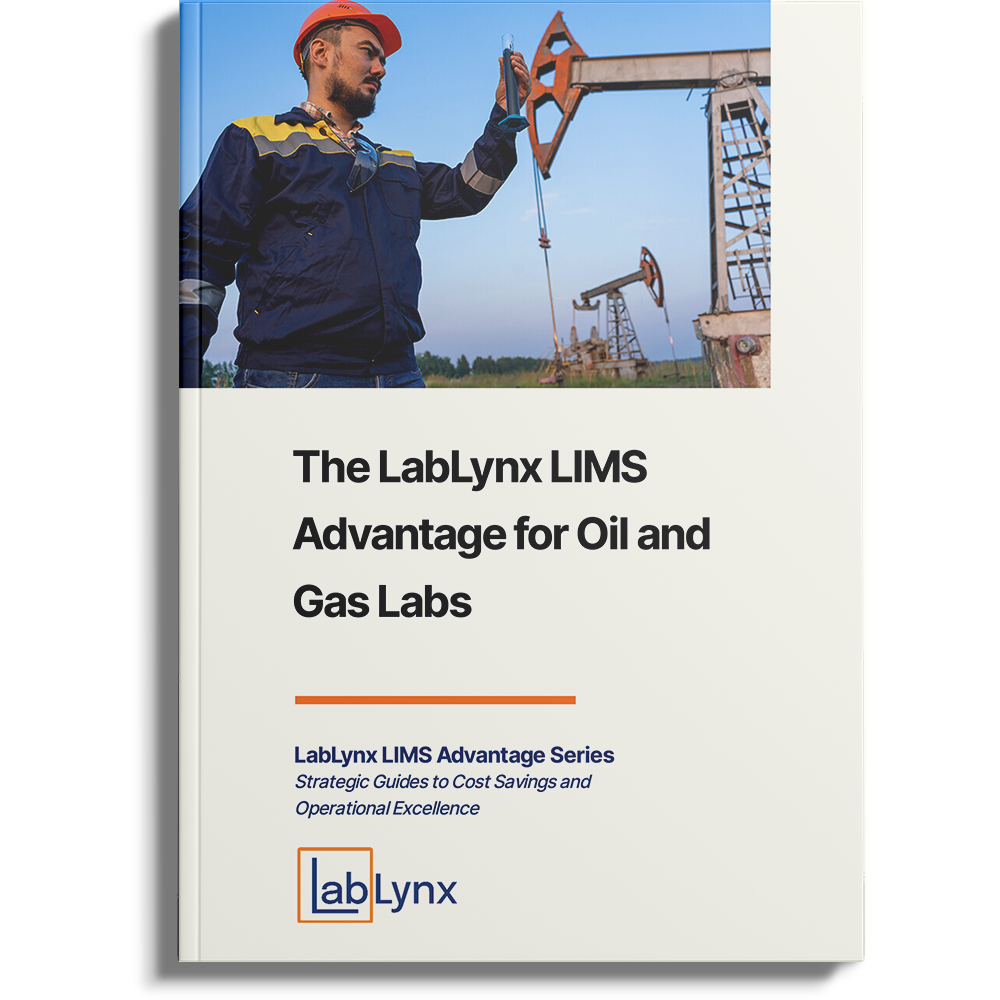
When we think about the Earth beneath our feet, we often overlook its remarkable complexity. Unseen to the naked eye, the soil holds a wealth of information crucial for agriculture, environmental management, construction, and beyond. Soil testing labs play a pivotal role in unraveling the secrets hidden within this resource, where understanding its characteristics and quality are essential for informed decision-making.
Soil testing in the agriculture industry
The agriculture industry relies heavily on soil testing labs to make informed decisions regarding crop selection and rotation, but that’s not where the value of soil testing stops. The agriculture industry also uses soil test results to fine-tune nutrient management, adjust soil pH, optimize irrigation practices, and adopt sustainable agricultural methods.
Soil tests serve as invaluable tools, providing essential information about nutrient levels in the soil. By analyzing nutrient profiles encompassing nitrogen, phosphorus, potassium, calcium, magnesium, and sulfur, farmers can precisely tailor their fertilization strategies. This targeted approach optimizes nutrient uptake by crops, resulting in improved yields and resource efficiency. Through soil testing, farmers can strike a delicate balance, avoiding both nutrient deficiencies that hinder growth and excessive nutrient application that may harm ecosystems.
The pH level of soil also plays role in determining nutrient availability to plants. Soil testing labs allow farmers to identify pH imbalances, whether the soil is too acidic or too alkaline. With this knowledge at hand, appropriate amendments like lime or sulfur can be applied to adjust pH levels, creating an optimal environment for nutrient absorption by crops. By fine-tuning pH, farmers maximize the utilization of nutrients present in the soil, promoting healthier and more vigorous plant growth.
Soil texture analysis, which evaluates the proportions of sand, silt, and clay particles, provides critical insights into a soil’s water-holding capacity and drainage characteristics. With this information, farmers make informed decisions about irrigation scheduling, water application rates, and the design of drainage systems. By understanding the soil’s moisture retention capabilities, growers optimize water use efficiency, avoiding waterlogging or drought stress.
Laboratories also conduct tests to identify and quantify contaminants, including heavy metals, pesticides, herbicides, and other pollutants. Utilizing advanced analytical techniques, such as spectroscopy and chromatography, soil testing labs identify soil health indicators. These indicators help farmers to take proactive measures to improve soil quality and contribute to the preservation of ecosystems and, in some cases, the protection of human health.
Soil testing in the environmental management industry
The environmental management industry relies on soil test results to identify and mitigate environmental risks, assess site suitability, guide land restoration efforts, monitor environmental impacts, and promote sustainable land management practices. By leveraging this information, industry professionals can make informed decisions to protect soil quality, safeguard ecosystems, and ensure responsible land use.
Soil test results are the backbone of environmental risk assessment and mitigation. Environmental management professionals rely on soil tests to identify and quantify contaminants. The contaminants include heavy metals, pesticides, petroleum hydrocarbons, and other pollutants. With an understanding of the extent and nature of contamination, decisions can be made to develop effective mitigation strategies. Soil testing labs ensure compliance with environmental regulations, guide pollution control and cleanup efforts, and safeguard human health and ecosystems from the adverse effects of contaminants.
Soil testing is also used to evaluate land suitability for various purposes. Environmental management experts utilize soil tests to assess nutrient levels, organic matter content, pH, and physical properties, determining the soil’s suitability for agriculture, construction, habitat restoration, and other land uses. This information ensures that land utilization aligns with environmental considerations, minimizing potential risks and maximizing productivity. By understanding the soil’s composition and fertility, field experts can develop targeted strategies for soil amendment, erosion control, and re-vegetation, fostering successful ecological restoration and sustainable land management.
By having the soil testing labs analyze soil samples periodically, environmental researchers can track changes in soil quality, evaluate the effectiveness of remediation efforts, and monitor the impact of land use practices. Through continuous monitoring, emerging issues can be promptly identified and addressed, enabling proactive and responsible environmental management. Through the integration of soil testing data, environmental management professionals can implement sustainable practices that promote long-term soil health, ecosystem resilience, and balanced land utilization.
Soil testing in the construction industry
The construction industry uses the results from soil testing labs to inform various aspects of construction projects. By incorporating the results of soil tests into the design and construction processes, the construction industry can minimize risks, optimize construction methods, and ensure the structures’ long-term stability and safety. Soil testing labs helps inform engineering decisions, facilitates proper planning and mitigation strategies, and contributes to the overall success and sustainability of construction projects.
Soil testing labs provide indispensable information about the soil’s composition, density, and load-bearing capacity. Armed with this data, engineers and architects can design appropriate foundations for structures, including bridges, buildings, and roads. The results of soil tests guide decisions concerning foundation types (shallow or deep), footing depths and sizes, and the selection of construction materials. By incorporating soil testing into the design phase, construction professionals can optimize foundation designs, ensuring the structures stand the test of time.
Understanding the soil’s compaction characteristics is crucial for excavation activities. Soil testing labs reveal vital data about soil density, which helps construction teams determine the appropriate techniques and equipment for excavation, backfilling, and grading. By adhering to the soil’s compaction requirements, construction professionals can create stable and reliable construction platforms, ensuring the structures built atop these platforms maintain their integrity and perform optimally throughout their lifespan.
Geotechnical engineers rely on soil test results to determine key parameters such as soil-bearing capacity, settlement potential, and soil-structure interaction. The data from these types of soil tests forms the foundation for designing safe and structurally sound foundations, tunnels, and other geotechnical structures. By incorporating soil testing into the design and construction processes, the construction industry can attest to the resilience and longevity of these structures.
Implementing a LIMS in soil testing labs
As illustrated in this article, soil testing labs provide invaluable data to multiple industries. Therefore, soil testing labs need to have streamlined laboratory operations, deliver accurate and reliable results, provide exceptional customer service, and constantly adapt to meet the evolving demands of uniquely different regulated industries. A laboratory information management system (LIMS) can deliver all this and more.
LIMS software eliminates the need for manual paperwork and reduces the chances of errors or data duplication. This automation saves time, improves workflow efficiency, and allows your soil testing laboratory staff to focus more on critical tasks, resulting in increased productivity. A LIMS also tracks and manages sample information, including sample collection, storage, and disposal, and provides real-time visibility into sample locations, quantities, and statuses, reducing the risk of sample loss or misplacement.
A quality LIMS, like the ELab LIMS from LabLynx, can help enforce standard operating procedures (SOPs) and quality control protocols, ensuring consistency and adherence to predefined methods and guidelines. The ELab laboratory management system can validate and flag any deviations or errors in test results, helping maintain data integrity and quality. Additionally, ELab LIMS can facilitate compliance with regulatory requirements, accreditation standards, and industry best practices.
Check out www.lablynx.com for more information on how our ELab LIMS for Soil Testing Labs can improve efficiency, enhance data management, ensure quality control, facilitate compliance, streamline collaboration, enable data analysis, and support scalability.





